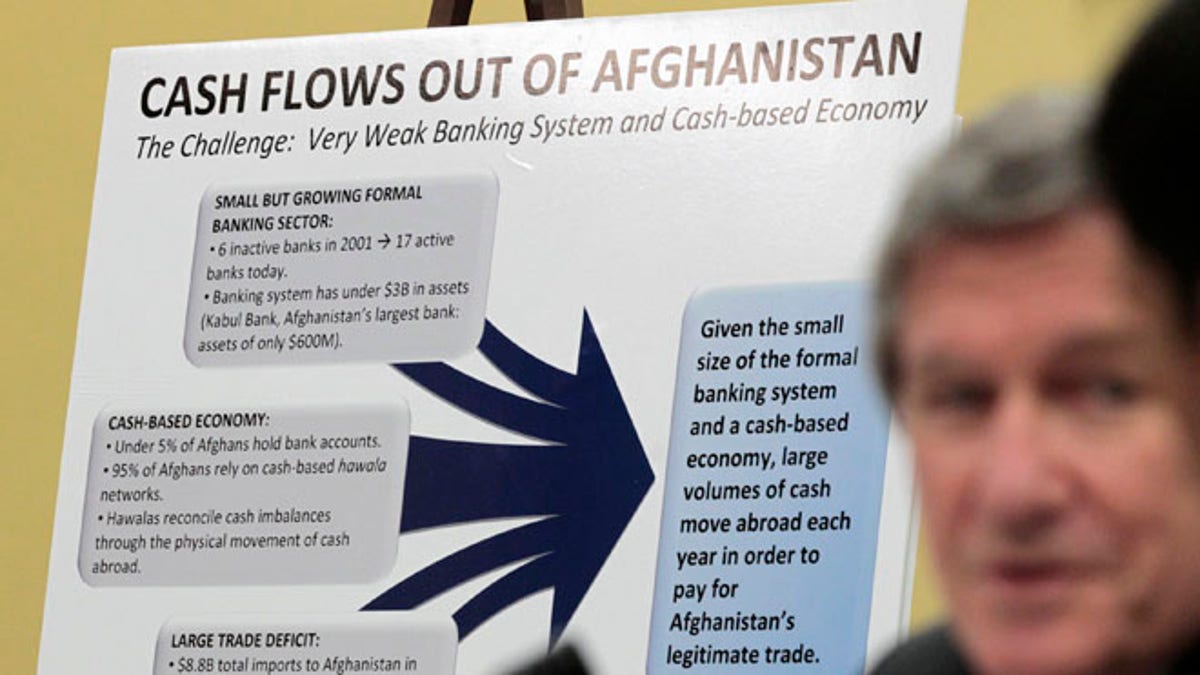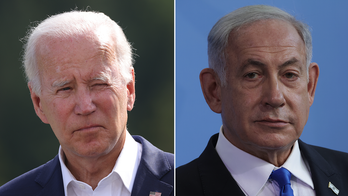
FILE: 2O1O: Richard Holbrooke, then-State Department special representative for Afghanistan, testifies on Capitol Hill in Washington, D.C. (REUTERS)
The main U.S. foreign assistance agency wants to step up use of smartphones, satellite imagery and GPS cameras to oversee tax-funded development projects in Afghanistan that aid workers no longer will be able to observe firsthand as American troops leave the country.
The U.S. Agency for International Development on Saturday began seeking bids on a monitoring project contract that could cost up to $170 million. The agency hopes the five-year project will allow aid work to continue in Afghanistan despite the troop drawdown and will satisfy lawmakers and others who have criticized the agency for weak monitoring.
Unless security improves significantly, Afghans hired by USAID contractors will increasingly be on the front line of overseeing the agency's largest single-country program.
"As the U.S. prepares to have a smaller military footprint, it could become increasingly challenging for us to do our direct monitoring and have U.S. employees on the ground looking at things," Mark Feierstein, associate administrator for USAID, said in an interview.
"We are going to try to do whatever oversight we can with USAID employees," Feierstein said. "If we conclude that even with the best technology we just can't have eyes and ears there, we just won't do the project."
Since 2001, USAID has spent $12 billion on development projects in Afghanistan. Millions more will pour into the country in the years ahead.
USAID-funded projects are monitored by aid workers, contractors, other U.S. government employees, USAID's internal watchdog, the Government Accountability Office, the Afghan government and civil organizations, and the office of Special Inspector General for Afghanistan Reconstruction.
The new contract aims to enhance oversight by combining these existing monitoring techniques with stepped up use of high-tech tools. USAID already has used them in Afghanistan, Pakistan, Yemen, Iraq and certain areas of Colombia.
The tools include satellite imagery, cameras that take photos with the time, date and GPS coordinates, and cellphones that can be used to collect data and conduct informal public opinion surveys.
Typically, Afghans are hired to go to project sites and collect information useful in monitoring the work. Such work can put them in danger if they are seen by insurgents fighting America's presence in Afghanistan.
The drawdown of forces and further restricted movement of U.S. civilian workers in Afghanistan has alarmed Sen. Claire McCaskill, D-Mo., long critical of waste and fraud in U.S. reconstruction projects in Afghanistan.
At a Senate hearing this past week, McCaskill noted that the special inspector general's office predicts that soon no more than 21 percent of Afghanistan will be accessible to U.S. civilian oversight personnel.
"Now that's a 47 percent reduction since 2009," McCaskill said. "We had eyes and ears on the majority of Afghanistan during a time period that ... billions of dollars of American taxpayer money was being spent to build things. We're only going to have eyes and ears in 21 percent of the country."
In its most recent quarterly report, the special inspector general's office also expressed deep concern that oversight could suffer.
"As the U.S. drawdown continues, implementing agencies and oversight bodies will have far less visibility over the reconstruction programs than in the past," it said in the report in January.
In a letter to U.S. officials late last year, John Sopko, the special inspector general for Afghanistan reconstruction, said access had already become an issue. He noted that in 2013, his office was unable to visit $72 million in infrastructure projects in northern Afghanistan because they were in areas that could not be reached by U.S. civilian employees.
Sopko said five zones, encircling many of the highest-populated cities in the country, have been identified as having "possible oversight access."
He said U.S. military officials have told his office that "requests to visit a reconstruction site outside of these oversight bubbles will probably be denied."
U.S. military officials also have said they will provide civilian access only to areas within a 30-minute trip of an advanced medical facility, he wrote.
In his letter, Sopko acknowledged USAID's work to use third-party monitors to oversee construction sites and said the State Department was looking at ways to expand access by periodically moving emergency medical and security forces to the edges of the oversight bubbles.
"Even if these alternative means are used to oversee reconstruction sites, direct oversight of reconstruction programs in much of Afghanistan will become prohibitively hazardous




